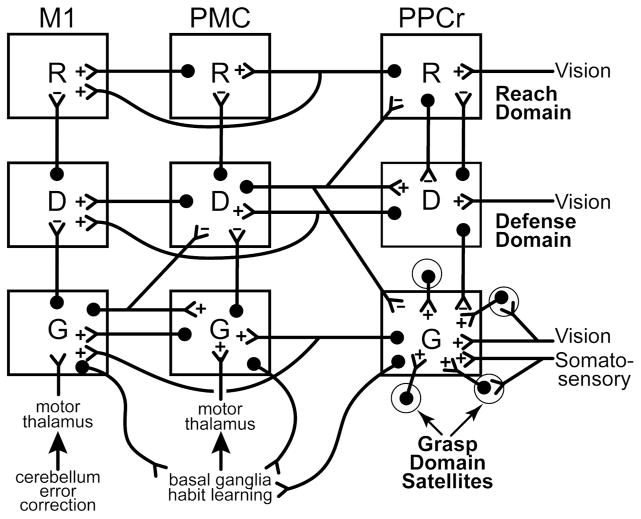Fig. 3.
Proposed interactions of three example classes of domains, R-reach, D-defensive and G-grasp, in rostral posterior parietal cortex (PPCr), premotor cortex (PMC) and primary motor cortex (M1) of primates. In PPC domains are activated by various combinations of visual, somatosensory, and other sensory inputs. The domains compete with each other via mutual inhibition to be most activated, and to thereby activate functionally matched domains in PMC and M1, where further competition takes place. Domains in PMC are informed by inputs from prefrontal cortex and a relay of basal ganglia inputs to the motor thalamus. Domains in M1 receive inputs from PMC and PPC, other areas of motor cortex, and a relay of cerebellar inputs to the motor thalamus. All illustrated connections are excitatory (+), but they may have inhibitory effects by selectively activating inhibitory neurons (−) that are not shown. Feedforward connections from PPCr to PMC and M1 are focused to functionally matched domains, while feedback connections are more widespread, and may result in inhibition of mismatched domains. Connections between mismatched domains largely produce inhibition while patches of cortex (satellites) around domains contribute to domain functions via dense interconnections (shown only for the PPCr domain). This model is currently under further evaluation.

